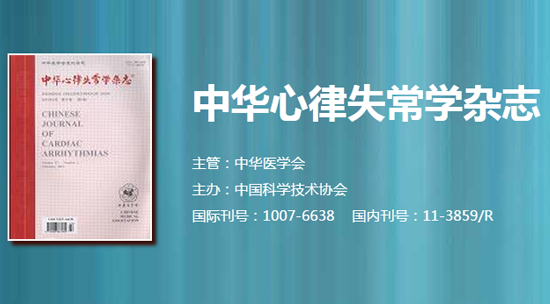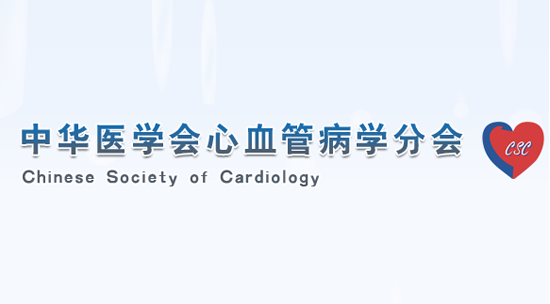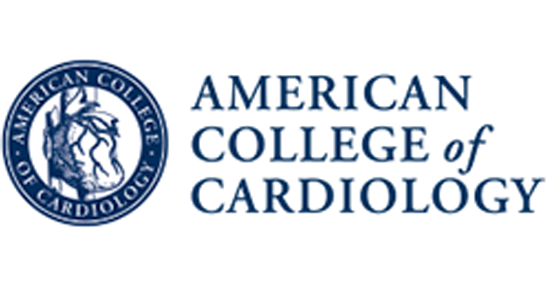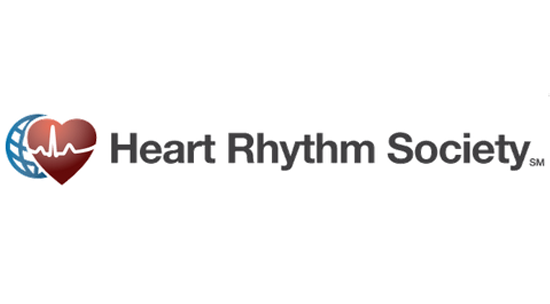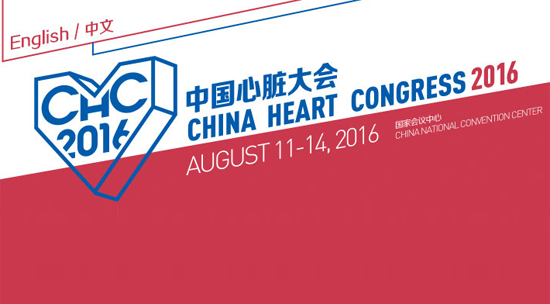HeartRhythm主编—陈鹏生教授语音速递(十二月刊 英文版)
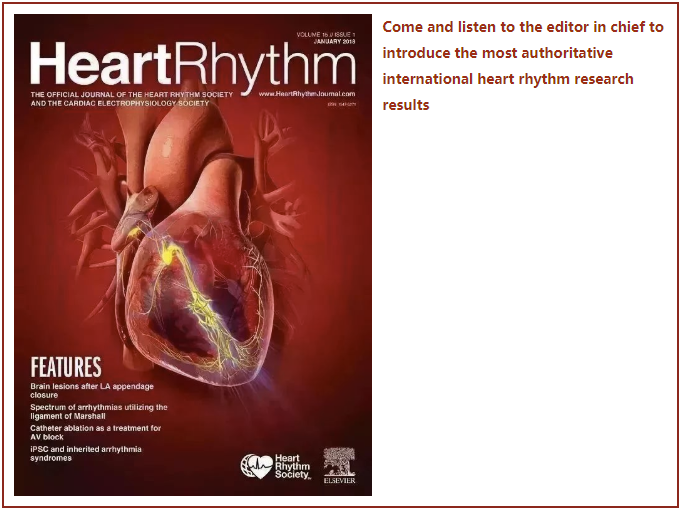

Peng-Sheng Chen
Hello, this is Dr. Peng-Sheng Chen, the Editor-in-Chief of Heart Rhythm. Because I am completing my ten-year term as the Editor-in-Chief, this will be my final podcast for the journal.
The December 2023 issue is a focus issue on devices. The first article is titled “Result of the Physiological Pacing Registry, an International Multicenter Prospective Observational Study of Conduction System Pacing”. The international prospective observational registry included 44 sites from 16 countries globally between November 2018 and May 2021. A total of 870 subjects were enrolled. This multicenter study demonstrates that CSP is technically feasible in most patients with relatively higher implant success and suggests that, with current technology, LBBAP may have better pacing parameters than HBP.
The next one is “Left bundle branch area pacing reduces epicardial dispersion of repolarization compared to biventricular cardiac resynchronization therapy”. The purpose of this study was to compare the effects of temporary BiV-epi, BiV-endo, and LBBAP on epicardial left ventricular (LV) repolarization using electrocardiographic imaging (ECGi). They found that temporary LBBAP reduces epicardial dispersion of repolarization compared with conventional BiV-epi.
Up next is “Long-term Outcomes of Abandoned Leads of Cardiac Implantable Electronic Devices”. This retrospective cohort study reviewed a single-center CIED registry of 2962 procedures performed from 1984-2018 and identified 130 patients with abandoned leads. The authors found that patients with a single abandoned lead showed similar risks of CIED-related infections, venous thrombosis/stenosis, and all-cause mortality as those without abandoned leads. In contrast, those with multiple abandoned leads showed increased risks of infection and all-cause mortality.
Coming up is “Acute Human Defibrillation Performance of a Subcutaneous Implantable Cardioverter-Defibrillator with an Additional Coil Electrode”. The purpose of this study was to acutely assess the defibrillation efficacy of parallel and transverse configurations in patients receiving an S-ICD. This study enrolled 35 patients. Compared to the conventional S-ICD system, mean shock impedance decreased for both parallel and transverse configurations. The authors conclude that adding a second shock coil, particularly in the parallel configuration, significantly reduced the impedance and had a high likelihood of defibrillation success at energies ≤40 J. This may enable the development of a smaller S-ICD.
The next article is “ECG characteristics of "true" left bundle branch block: Insights from transcatheter aortic valve-related LBBB and His-Purkinje conduction system pacing-correctable LBBB”. The purpose of this study was to characterize electrocardiographic morphological features of LBBB patterns in patients with (1) LBBB after transcatheter aortic valve replacement (TAVR) and (2) LBBB correctable by conduction system pacing (CSP). The Strauss criterion is, QRS duration ≥ 140 ms for men or 130 ms for women; QS or rS complex in leads V1 and V2; and mid-QRS notching or slurring in ≥ 2 of the following leads: V1, V2, V5, V6, I, and aVL. The authors found that the Strauss criteria and QRS notching are highly prevalent in LBBB after TAVR and in LBBB correctable by CSP.
Up next is “Safety of same-day discharge after lead extraction procedures”. In this analysis of 111 patients who underwent elective transvenous lead extraction, 80 patients (72%) were discharged on the same day (SDD group) while 31 patients (28%) stayed overnight (overnight group). No major complications were reported in either group. Patients who underwent a procedure using advanced extraction techniques were 3.5 times more likely to stay overnight. The authors conclude that in selected patients, SDD is feasible and safe. Higher body mass index, fewer extracted leads, shorter lead dwell times (<10 years), and less frequent use of laser-powered extraction sheaths were associated with an increased likelihood of SDD.
Coming up is “Chlorhexidine Gluconate Pocket Lavage to Prevent Cardiac Implantable Electronic Device Infection in High-Risk Procedures”. Patients from a prospective multicenter registry undergoing high-risk procedures were included. Chlorhexidine Gluconate (CHG) lavage was performed by irrigating the generator pocket with 20 cc of 2% CHG without alcohol, followed by normal saline irrigation. Only normal saline irrigation was performed in the comparison group. The authors found that CHG lavage during high-risk procedures was associated with a reduction in CIED-related infections without any adverse events reported. The benefits of CHG lavage were observed even during long-term follow-up and in propensity score matching analysis.
The final article for the focus issue is “Association between Nighttime Heart Rate and Cardiovascular Mortality in Patients with Implantable Cardioverter Defibrillator: A Cohort Study”. A total of 534 ICD recipients with sinus rhythm were included in the study. The mean baseline NTHR was 59.6 ± 8.0 beats/min. During the follow-up period of 60 months, 88 (16.5%) patients experienced cardiovascular mortality. Each 1 beat/min increase in NTHR was associated with a 7.8%, 10.1%, and 5.7% increase in the risk of cardiovascular mortality in the total population, patients with heart failure, and patients without heart failure, respectively. The authors conclude that continuous monitoring of NTHR may identify patients at high risk of cardiovascular mortality.
In addition to the device-focused articles, we also have the following regular articles. The first one is titled “Atrioventricular node ablation is an effective management strategy for atrial fibrillation in patients with hypertrophic cardiomyopathy”. A multicenter study with retrospective analysis of a prospectively collated HCM registry was performed. Fifty-nine patients had AV node ablation. During post-AVN ablation follow-up of 80 months, left ventricular ejection fraction (LVEF) remained stable. Forty-nine patients (83.1%) reported an improvement in symptoms. The authors conclude that AVN ablation improved symptoms without impacting left ventricular function in the majority of patients. The data suggest that AVN ablation is an effective and safe management approach for AF in HCM and should be further evaluated in larger prospective studies.
The next one is “Sinus rhythm QRS morphology reflects right ventricular activation and anatomical ventricular tachycardia isthmus conduction in repaired tetralogy of Fallot”. Patients with repaired TOF and complete right bundle branch block referred for transcatheter pulmonary valve replacement (PVR) or presenting with sustained VT underwent comprehensive 3-dimensional mapping in sinus rhythm. Patients with isthmus block between the pulmonary annulus and the ventricular septal defect patch and between the ventricular septal defect patch and the tricuspid annulus were more likely to demonstrate lower amplitude R' waves and QRS fragmentation in lead V1, and terminal S waves in lead aVF than those with intact conduction. These findings provide a mechanistic link between RV activation and common electrocardiographic findings.
Up next is “Association of Epicardial and Intramyocardial Fat with Ventricular Arrhythmias”. Patients enrolled in the PROSE-ICD registry who underwent contrast-enhanced computed tomography were included. The authors found that in ischemic cardiomyopathy patients, increased fat distribution heterogeneity is associated with VA. In non ischemic cardiomyopathy patients, an increased volume of intramyocardial fat and epicardial adipose tissue is associated with a higher risk for VA. These findings suggest that fat's contribution to VAs depends on the underlying substrate.
Coming up is “Cryothermal Energy Demonstrates Shorter Ablation Time and Lower Complication Rates Compared with Radiofrequency in Surgical Hybrid Ablation for Recurrent Ventricular Tachycardia”. Between 2009 and 2022, 43 patients underwent either a cryothermal (n = 17) or a radiofrequency (n = 26) hybrid epicardial ablation procedure with direct surgical access. The ablation time was significantly shorter in those undergoing cryothermal ablation vs radiofrequency ablation. There were no complications in the cryothermal ablation group compared with 6 patients with complications in the radiofrequency group. Recurrent VT episodes and all-cause mortality were similar in both groups. The authors conclude that hybrid surgical VT ablation with cryothermal or radiofrequency energy demonstrated similar efficacy outcomes. Cryothermal ablation was more efficient and safer than radiofrequency in a surgical setting and should be considered when surgical access is required.
The next one is “Diagnostic Pitfalls in Patients Referred for Arrhythmogenic Right Ventricular Cardiomyopathy”. The authors studied 726 patients with previously diagnosed or suspected ARVC. Among them, ARVC was ruled out in 365 (50.3%). On the basis of outside evaluation, 23.8% of these patients had received ICDs and device extraction was recommended in 9.0% after reevaluation. An additional 5.5% had received ICD recommendations, all reversed on reevaluation. The authors conclude that false suspicion or misdiagnosis was found in most patients referred for ARVC, resulting in inappropriate ICD implantation or recommendation in 14.5%. Misdiagnosis or false suspicion was most commonly due to misinterpretation of cardiac magnetic resonance imaging.
Next is “Significance of Left Posterior Extension of Early Repolarization in Patients with J Wave Syndrome”. Forty patients diagnosed with ERS were included. J waves were observed in the lateral, inferior, and posterior leads of 26 (65%), 31 (78%), and 39 (97%) patients, respectively. Body surface mapping was evaluated in 9 patients, all of whom exhibited a positive area on the posterior region. The authors conclude that posterior J waves are common in ERS patients. This abnormality can be detected using leads V7-V9 and the BSM system.
The next one is “Pacemaker lead insertion sites contribute to abnormalities of myocardial function and histopathology”. This was a single-center retrospective study including 122 patients who underwent cardiac CT and 3 patients with histological specimens available. The authors found that lead insertion site-associated regional wall motion abnormalities are common and associated with systemic ventricular dysfunction. Histopathological alterations, including myocardial compression, fibrosis, and calcifications beneath active leads, may explain this finding.
Next up is “A Multicenter Retrospective Evaluation of Magnetic Resonance Imaging in Pediatric and Congenital Heart Disease Patients with Cardiac Implantable Electronic Devices”. Across 14 institutions, 314 patients underwent 389 MRIs. There were 288 pacemakers (74%) and 87 ICDs (22%). Symptoms or CIED changes occurred in 4.9% of MRI scans (6.1% of patients). On 9 occasions (2%), warmth or pain occurred. Pacing capture threshold or lead impedance changes occurred in 1.4% and 2.0% of CIEDs post-MRI and at follow-up. These data provide evidence that MRIs can be performed in pediatric and congenital heart disease patients with CIEDs, including non-MRI-conditional CIEDs and epicardial and/or abandoned leads, with rare minor symptoms or CIED changes but no other complications.
Up next is “Selective Blockade of Interleukin-6 Trans-signaling Depresses Atrial Fibrillation”. Interleukin 6 (IL-6)-signaling is predominantly pro-inflammatory. In patients studied, the elevation of IL-6 trans-signaling level was positively associated with AF occurrence. IL-6 trans-signaling activation was recapitulated in the mouse model of AF. In transverse aortic constriction-challenged mice, the selective blockade of IL-6 trans-signaling with sgp130Fc attenuated AF inducibility. Sgp130Fc administration also reduced immune cell infiltration and oxidative stress in the mouse atrium. The authors conclude that IL-6 trans-signaling activation contributes to AF development, and its selective blockade may promise a novel therapeutic strategy.
The above original article is followed by a contemporary review titled “Restoration of calcium release synchrony: A novel target for heart failure and ventricular arrhythmia”. This narrative review evaluates the role of aberrant Ca2+ release synchrony in the pathophysiology of cardiomyopathies and ventricular arrhythmias. The potential therapeutic benefits of restoration of Ca2+ release synchrony in heart failure and ventricular arrhythmias are also discussed.
The following two articles show two different viewpoints about catheter ablation of the long QT syndrome. The proponent's Viewpoint is titled “Epicardial Arrhythmogenic Substrate in Long-QT Syndrome”. The authors report that RV epicardial ablation resulted in QTc shortening similar to the left cardiac sympathetic denervation procedure but without surgical complications. The counterpoint article is titled “Epicardial ablation in Long QT Syndrome”. The authors pointed out that most patients with LQTS do not need and should not receive RF ablation until and unless more substantial and convincing evidence emerges.
The issue also publishes two letters. The first is titled “Safety of Direct Oral Anticoagulant Use in Patients Taking Verapamil or Diltiazem”. The non-dihydropyridine calcium channel blockers (diltiazem and verapamil) can potentially interact with DOACs via cytochrome P-450 enzymes and p-glycoprotein substrate inhibition. These properties may increase bleeding complications in patients taking DOAC. However, the authors found no statistically significant increase in the risks of clinically relevant bleeding in patients who received a DOAC and verapamil or diltiazem concomitantly. The second letter is “Feasibility and efficacy of dual cathode modality in left bundle branch pacing”. The dual cathode pacing uses the tip and ring electrodes as the cathode simultaneously. The authors found that dual cathode pacing could be a feasible and effective modality in LBBP.
I hope you have enjoyed listening to my final podcast. For Heart Rhythm, I’m the Editor-In-Chief, Dr. Peng-Sheng Chen.
